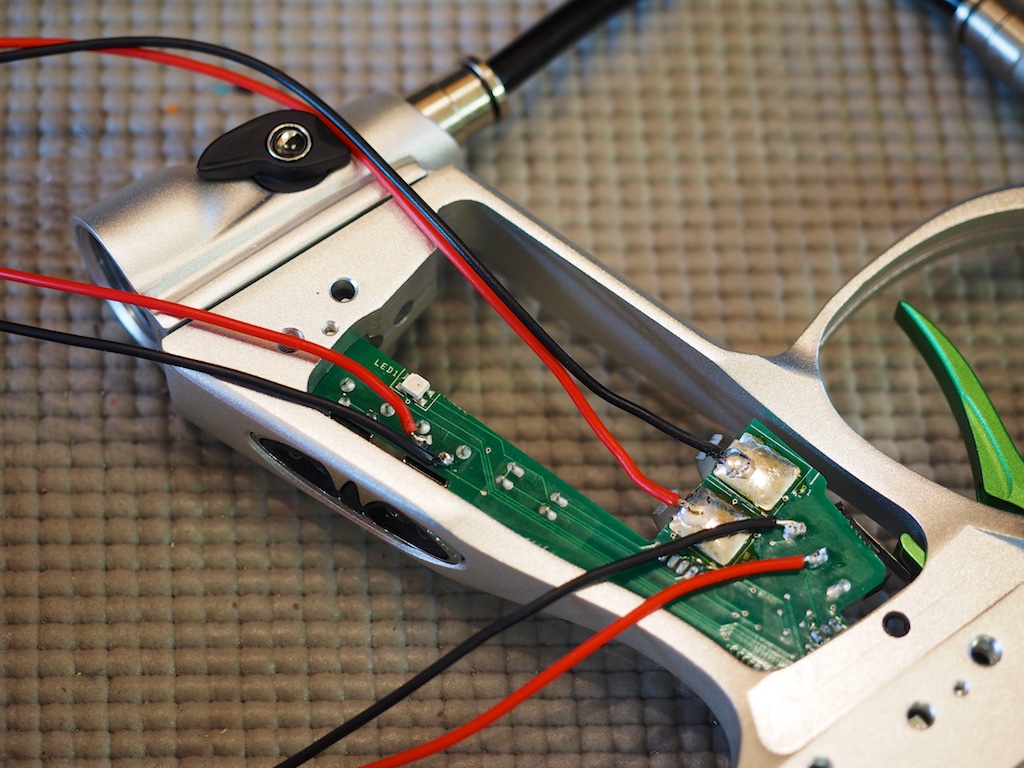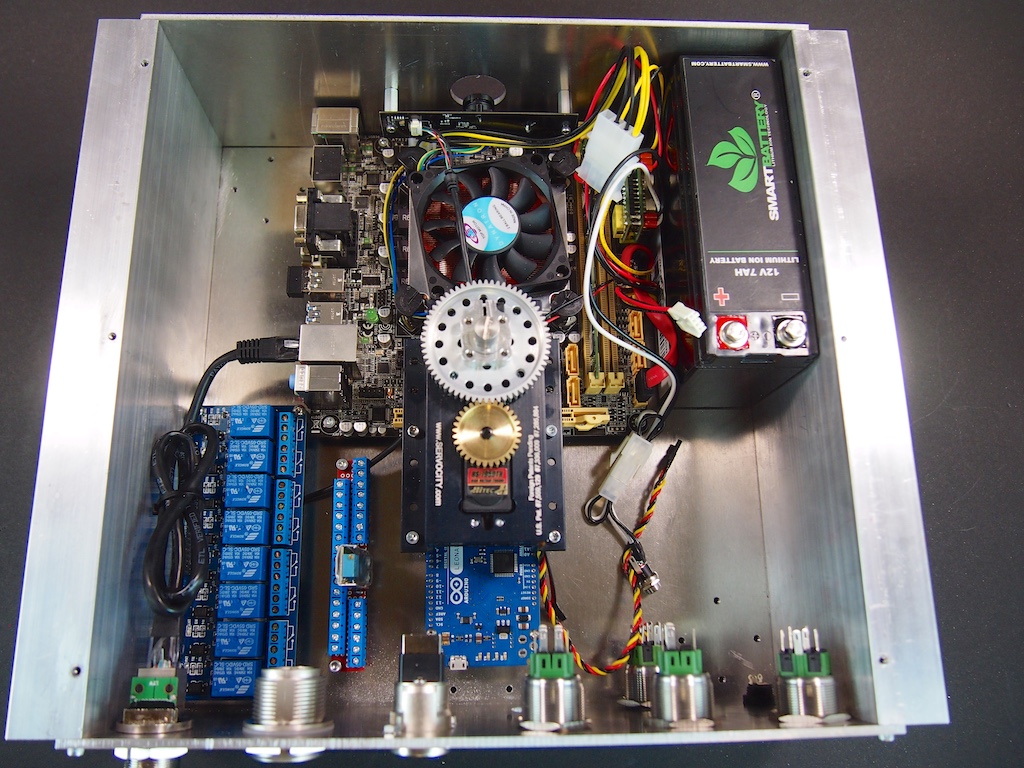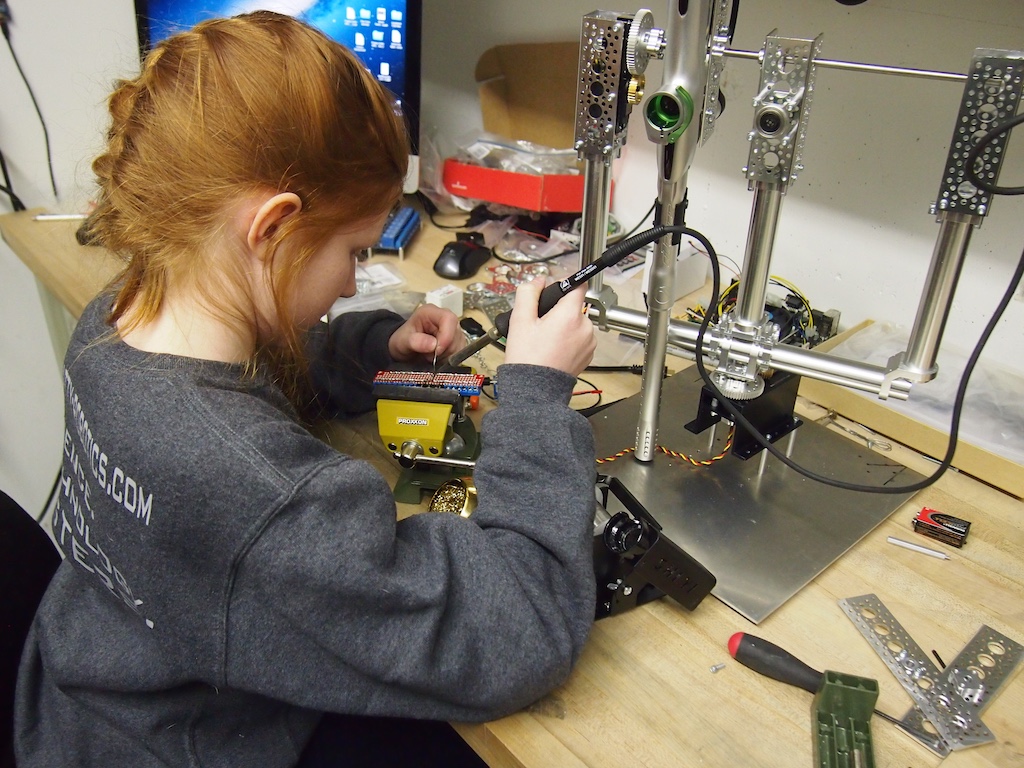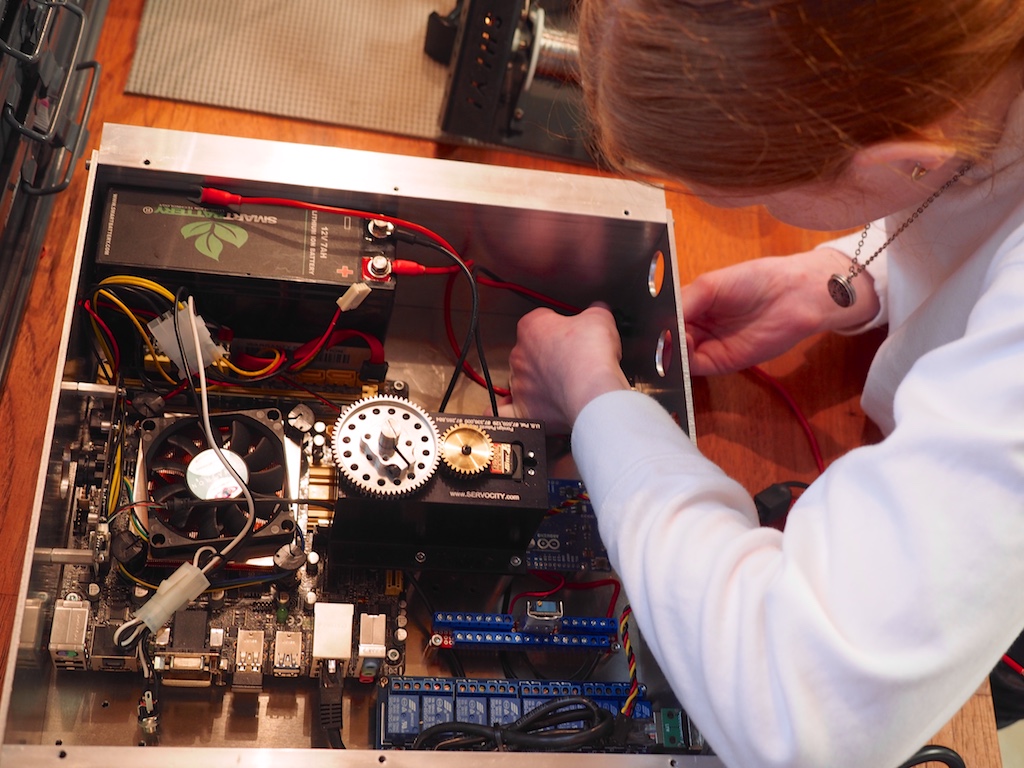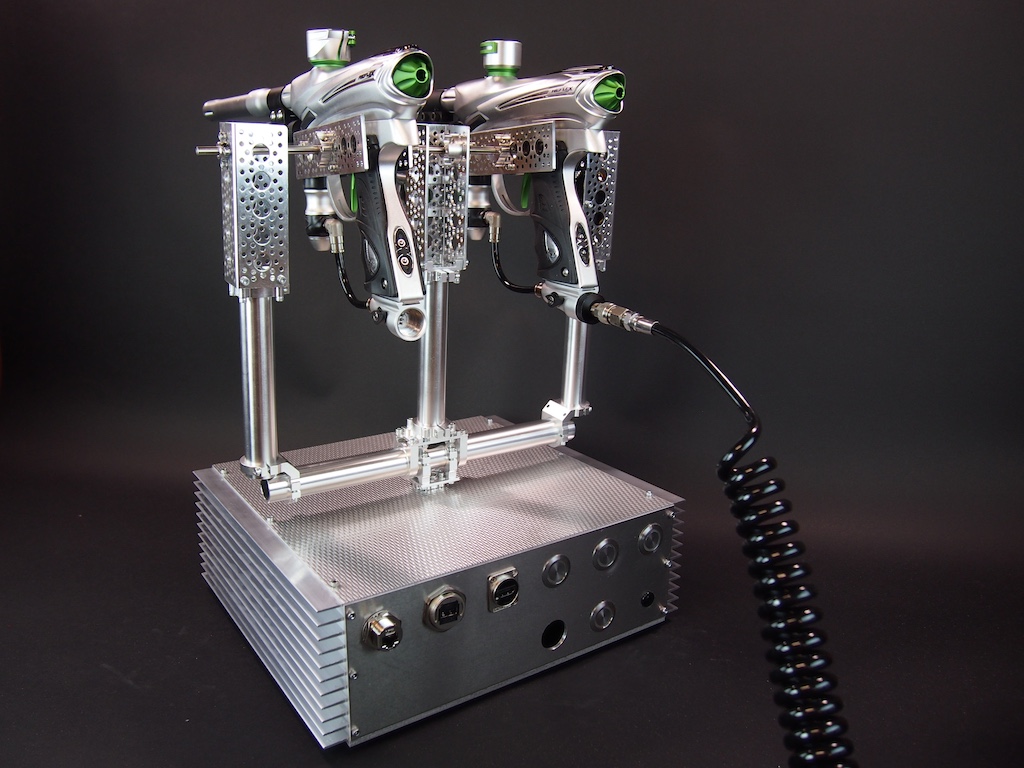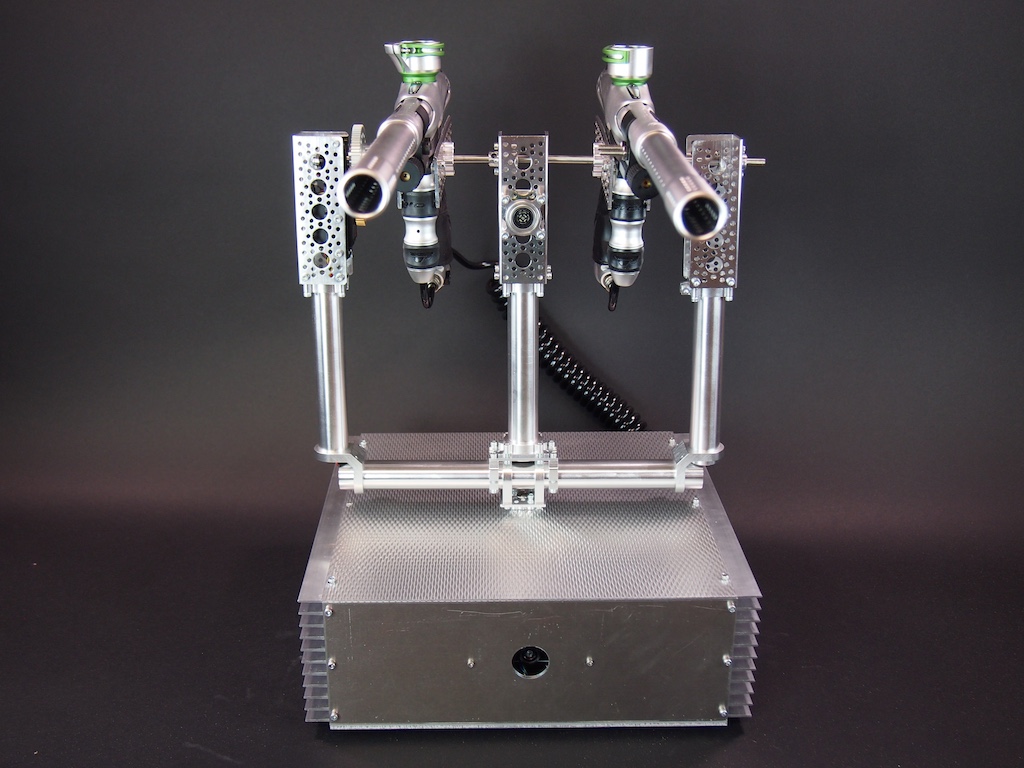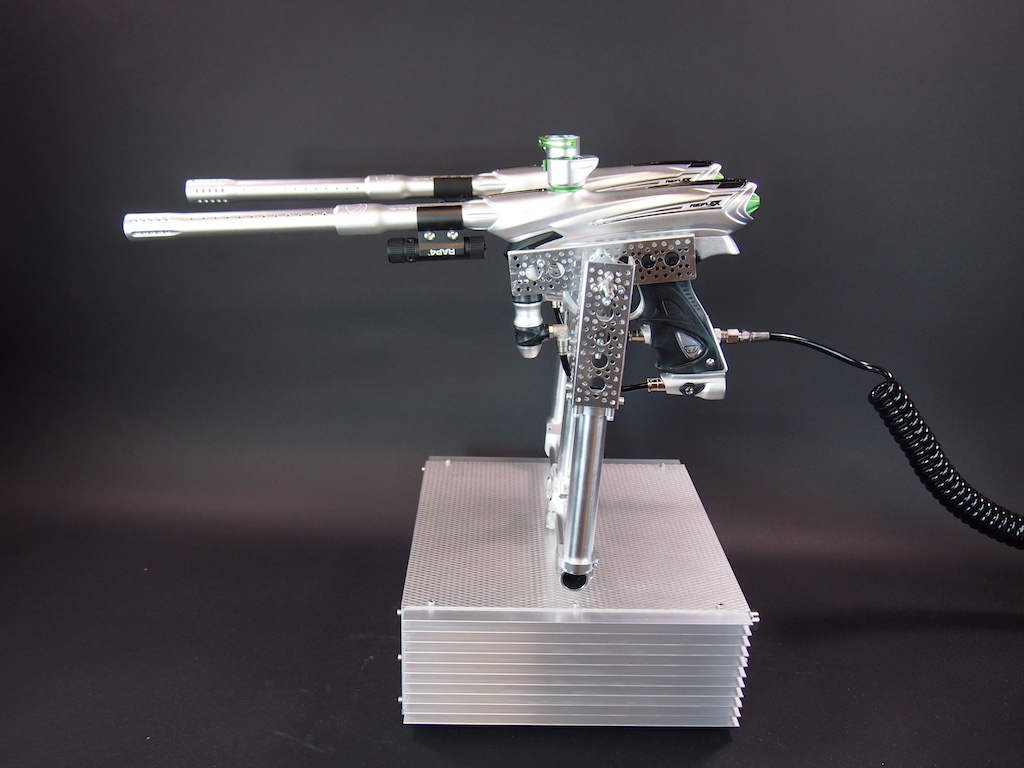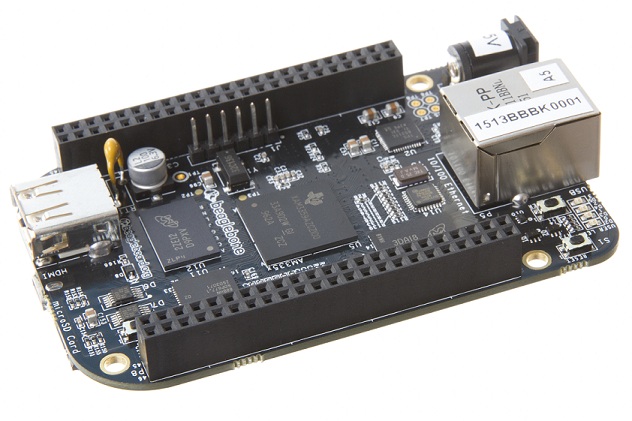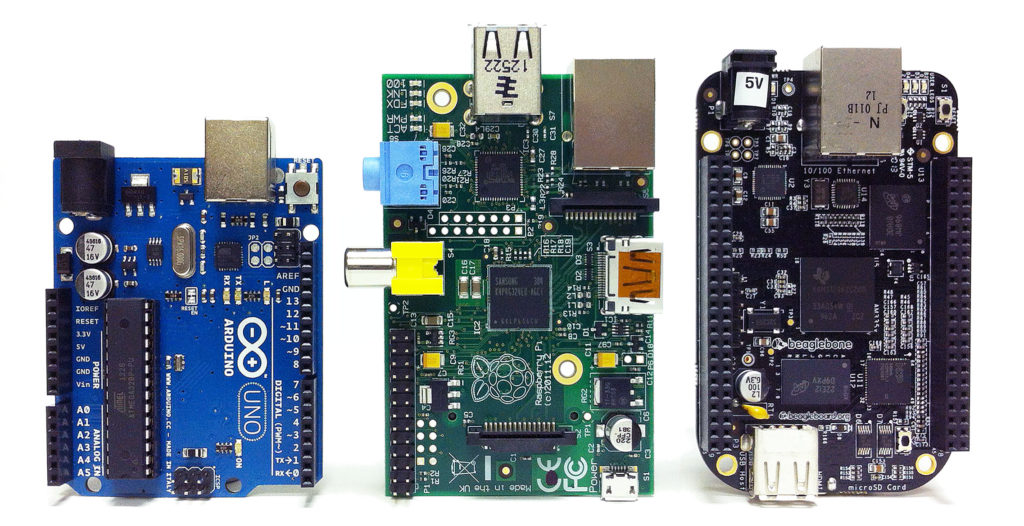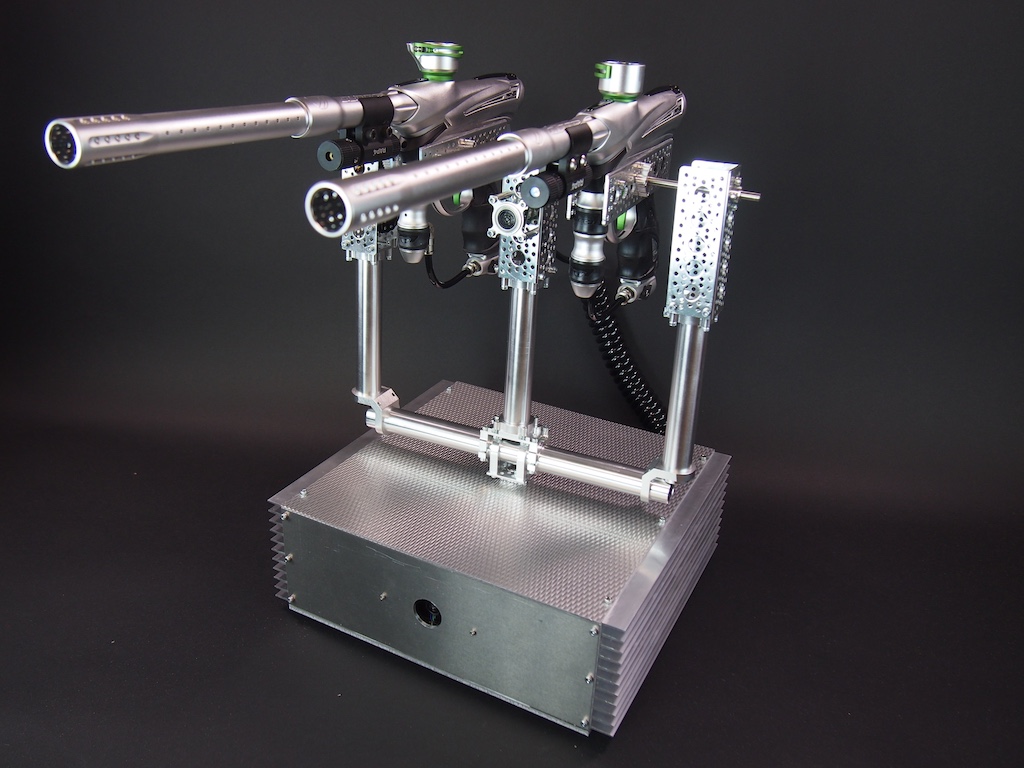
Centurion Paintball Sentry Gun

The Centurion is an automatic-targeting paintball sentry gun. Its purpose is to guard a doorway, alleyway, or any open space. It watches an area with its camera. If it sees movement, it aims its guns at it and shoots at a high rate of fire until the target leaves the field of view or stops moving. As long as the target keeps moving, the guns track the movement and keep shooting. It can also differentiate color. So, for example, team members with blue sweat shirts could be allowed to pass, but enemies with red sweatshirts will be dealt with severely. The main components are:
- Motherboard with a Corei5-4570S Quad Core 2.9Ghz, 8GB RAM, 120GB SSD, & WiFi module
- Arduino Leonardo
- Wide-angle HD webcam
- 8-Channel Relay Board
- 12v 7,000mAh Lithium-Ion battery
- Actobotics Pan-Tilt Turret
- Actobotics tubes, channel, brackets, clamps, shafts, ball bearings, gears, and other components
- Actobotics Hitec Servos
- Maxbotix ultrasonic range finder
- (2) high-performance paintball guns (Dye Proto Reflex 14’s with custom modified barrels)
- (2) targeting lasers
- (2) electric ammunition hoppers (not shown)
- (2) air tanks (not shown)
- Portable keyboard, mouse, and keyboard (not shown)(not necessary for operation)
We started out with the code from the open source Project Sentry Gun, which is written in Processing, and then went from there.
The Centurion is one of several projects that we work on just for fun when we aren’t working other projects. The whole system isn’t done yet, but we’ve made good progress on it. We are currently working on two new projects for the New York Hall of Science, so we won’t be getting back to this one for a while, but we thought we would share our work-in-progress.
We hacked into the circuit board of the paintball guns in order to load and fire the guns electronically.
We reverse engineered the gun’s circuit board to figure out where we needed to hack into it in order to control the firing sequence.
We built an aluminum enclosure for the electronics and the base of the pan-tilt turret, which is made with Actobotics hardware and servos:
Genevieve wiring up the relay board, which will control the firing of the paintball guns. Is that a gentle smile or a devilish grin? Is she thinking about paint balls flying at anyone in particular?
Genevieve soldering the power distribution board.
Genevieve wiring up the control switches and buttons on the back of the electronics enclosure.
Back view of the Centurion Sentry Gun, including multiple jacks and push buttons:
Front View, including the front port that the camera looks out of. When we are done, the port will be covered in glass.
Side View:
